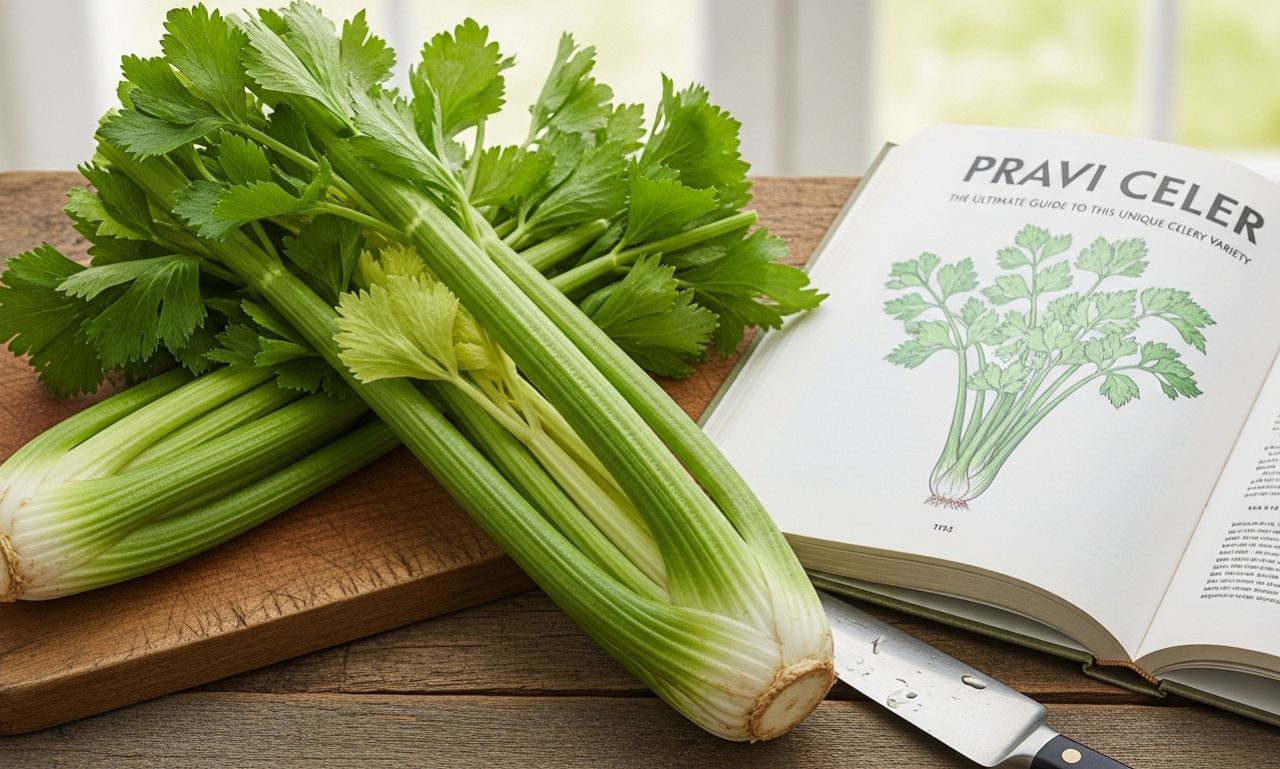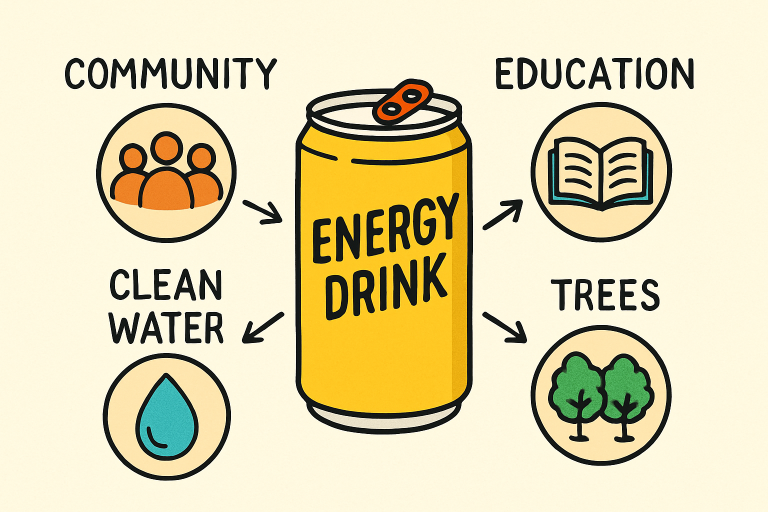FITNESS
Exploring Twisted Love Relationships

Love is often portrayed as a beautiful force, capable of bringing joy and connection. However, not all love stories are filled with sunshine and rainbows. Some relationships take a darker turn, morphing into what can be described as twisted love. This complicated emotion can fuel passion but also lead to chaos and pain.
Twisted love encompasses an array of dynamics—from obsessive infatuation to toxic entanglements that blur the lines between affection and control. It’s complex, messy, and oddly fascinating. If you’ve ever questioned whether your relationship has veered into troubling territory or if you’re simply intrigued by the psychology behind these passionate yet problematic bonds, you’re in the right place.
Let’s dive deeper into this captivating subject that intertwines human emotions with psychological theories while exploring signs of twisted love relationships along the way. You might find yourself more familiar with its intricacies than you’d expect!
The different forms of twisted love
Twisted love can manifest in various forms, each with its unique characteristics.
Obsessive love often blurs the lines between affection and possession. Here, one partner may become so enamored that they lose sight of boundaries, leading to unhealthy dependency.
Another form is toxic love, where emotions run high but are intertwined with manipulation and control. This relationship thrives on drama and conflict rather than genuine support.
Then there’s unrequited love, a one-sided affair that can spiral into obsession for those left yearning. The pain of longing without reciprocation creates an emotional rollercoaster.
There’s codependent love—where partners rely excessively on each other for fulfillment. This dynamic fosters a cycle of neediness that ultimately stifles personal growth.
Each form reveals how complicated human connections can be when passion turns dark or becomes skewed by psychological needs.
Signs of a twisted love relationship
Recognizing the signs of a twisted love relationship can be challenging. One key indicator is constant manipulation. This often manifests through guilt trips or emotional blackmail, making you question your self-worth.
Another sign is isolation from friends and family. If your partner discourages social interactions, it’s a red flag. Healthy relationships thrive on support from loved ones.
Jealousy can also rear its ugly head in twisted love scenarios. An excessive need to control who you talk to or where you go indicates an unhealthy dynamic.
Frequent arguments that escalate quickly are common as well. These conflicts may revolve around minor issues but leave lasting emotional scars.
If love feels more like a burden than joy, it might be time to reevaluate the situation. A healthy bond should uplift, not weigh down your spirit and mental health.
The psychology behind twisted love
Twisted love often stems from deep psychological needs. Individuals may seek out relationships that mirror past traumas or unresolved issues. This can create a cycle of dysfunction.
Attachment styles play a significant role here. Those with anxious or avoidant patterns might find themselves drawn to chaotic dynamics, believing it’s the only way to feel connected.
The thrill of intense emotions can also be addictive. Love intertwined with pain releases chemicals in the brain that mimic euphoria, creating a toxic bond that’s hard to break.
Moreover, societal influences contribute as well. Media often romanticizes unhealthy behaviors, making them seem desirable and normalizing toxicity in relationships.
Understanding these factors is crucial for recognizing and addressing twisted love dynamics within oneself and others. Exploring this psychology helps shine a light on paths toward healthier connections.
Famous examples of twisted love relationships in literature and media
Twisted love has long captivated audiences in literature and media, often showcasing the dark side of passion. One striking example is Heathcliff and Catherine from Emily Brontë’s “Wuthering Heights.” Their tumultuous bond drives them to madness and revenge, blurring the lines between love and obsession.
In modern film, “Fatal Attraction” presents a chilling portrayal of infatuation gone wrong. The character Alex Forrest becomes dangerously fixated on Dan Gallagher, leading to catastrophic consequences that highlight the perils of impulsive desires.
Another poignant narrative can be found in Shakespeare’s “Othello.” The manipulation by Iago transforms Othello’s love for Desdemona into jealousy-fueled tragedy. Each character grapples with emotions that spiral out of control.
These stories reveal how twisted love can lead individuals down destructive paths, serving as cautionary tales within their respective genres.
How to break free from a twisted love relationship
Breaking free from a twisted love relationship requires courage and clarity. Start by acknowledging the toxicity of your situation. Denial can trap you in pain, so face the reality head-on.
Set clear boundaries with your partner. Communicate your needs firmly but kindly. This step is crucial for establishing distance and protecting yourself emotionally.
Seek support from friends or family. Sharing your feelings can lighten the burden and provide fresh perspectives on your experience.
Consider professional help if needed. A therapist can guide you through the emotional turmoil, helping you regain strength and self-worth.
Develop new interests outside of the relationship. Engaging in hobbies or activities fosters independence and allows personal growth away from negativity.
Take it one day at a time. Healing isn’t instant; it’s a gradual process that leads to newfound freedom and peace within yourself.
Conclusion: Understanding and healing from twisted love relationships
Twisted love relationships often leave deep emotional scars. Understanding the complexities of these bonds is essential for healing. Recognizing the signs and forms of twisted love can empower individuals to take a step back and evaluate their situations.
Healing from such relationships involves self-reflection and support. It’s crucial to reach out to friends, family, or professionals who can offer guidance. Setting boundaries is another key aspect of recovery, allowing space for personal growth.
As painful as it may be, moving on opens doors to healthier connections. The journey through twisted love can teach valuable lessons about what we truly need in our lives and how to cultivate genuine affection without harm.
Embracing self-love will pave the way towards positive experiences in future relationships, fostering an environment where true connection thrives free from toxicity. Understanding this cycle is vital not just for breaking free but also for learning how to build loving dynamics that uplift rather than entrap.
FITNESS
The Path to Becoming a Certified Personal Trainer
Introduction
If you’ve ever felt drawn to help others improve their health and strength, becoming a trainer could be your path. It’s not simply about lifting weights or giving workouts—it’s about guiding people safely, confidently and effectively. Earning the right credential is a key first step in that journey. This article will walk you through how to become a qualified trainer, what to look for in a certificate, and how to launch your career with confidence.
Clarify What You Want to Do as a Trainer
Before you start, it’s helpful to define your goals and role.
- Are you looking to work with individuals one‑on‑one, or lead small groups?
- Do you want to focus on general fitness, strength development, mobility, or sport‑specific training?
- Will you train beginners, older adults, athletes, or a mix of clients?
- How many hours per week can you commit to learning and working with clients?
By answering these questions, you’ll be better positioned to choose a certificate that aligns with your ambition and fit.
Know What the Training Program Should Cover
A quality trainer certificate doesn’t just give you a badge—it teaches you the know‑how behind it.
- The program should include anatomy, exercise science, safe movement patterns and client evaluation.
- It also should cover how to design effective sessions, monitor progress, and adjust plans for different clients.
- You’ll want resources like study guides, exam prep materials, and clear instructions on how to take the exam.
- For example, on the website you’ll find that you can study at your own pace and take the exam online when you’re ready.
When the certificate covers these fundamentals, you’ll feel confident stepping into the role.
Check the Credibility of the Certificate Provider
Because your certificate will impact your reputation and job prospects, the provider matters.
- Ensure the training organisation is respected, has clear accreditation or industry recognition, and delivers current content.
- Read reviews from people who completed the training. For example some feedback noted concerns about gym recognition of the certificate.
- Find out how flexible the study options are and whether exam retakes or support are offered. For example, one provider allows you to take the exam online anytime and pays only if you pass.
Selecting a trustworthy provider helps ensure your investment pays off in the real world.
Match Requirements, Cost and Timeline to Your Situation
Becoming a certified trainer requires time and resources—be realistic and plan ahead.
- What are the prerequisites? Do you need to be CPR certified, have a high school diploma or prior fitness experience?
- What is the total duration of the course—from study start to passing the exam?
- How much will it cost? Are study materials and retake fees included?
- On the provider’s site you’ll see tiered certificate options—basic, advanced and lifetime credentials.
By aligning the certificate with your schedule and budget, you’ll set yourself up for smoother progress.
Plan How You’ll Use Your Certification to Launch
Earning the certificate is one thing—using it is another. Set a plan to launch your trainer career.
- Decide whether you’ll join a gym, offer freelance/online sessions, or specialise in a niche (for example mobility, sport conditioning or rehabilitation).
- Think about your personal brand: what makes you different? What type of clients will you serve?
- Keep learning. After certification, seek continuing education to stay current and expand your skill set.
- Use your certificate as a credential on your resume, website or social profiles and gather client testimonials to build trust.
With a concrete action plan, your training qualification becomes a launching pad—not just a piece of paper.
Conclusion
Becoming a certified personal trainer is a meaningful journey that begins with the right credential but continues with your passion, skill and consistency. By clarifying your role, choosing a reputable program, budgeting wisely, and planning your launch, you’re positioning yourself for success. The credential is your foundation—what you build on it is what will define your career. Ready to step forward? Explore certified personal trainer options and start shaping the future you want.
For the full range of credential options, visit Personal Trainer and explore which pathway fits your goals best.
FITNESS
Pravi Celer: The Ultimate Guide to This Unique Celery Variety

Are you ready to elevate your culinary adventures? Meet Pravi Celer, a unique variety of celery that’s turning heads in gardens and kitchens alike. Originating from the fertile lands of Eastern Europe, this vibrant vegetable is not just another green stalk; it offers a delightful crunch and flavor profile that will transform your dishes.
With its striking appearance and numerous health benefits, Pravi Celer is quickly becoming the star ingredient for food enthusiasts and health-conscious individuals. Whether you’re an experienced gardener or just starting out, this guide will take you on a journey through everything you need to know about Pravi Celer. From growing tips to delicious recipes, get ready to discover why this extraordinary celery variety deserves a spot on your plate!
What is Pravi Celer?
Pravi celer is a unique variety of celery that stands out for its robust flavor and vibrant color. Unlike the common green stalks we often see, pravi celer boasts rich, deep hues ranging from light green to a striking purple.
This variety originates from Eastern Europe, where it has been cultivated for generations. Local farmers cherish it not only for its taste but also for its resilience in various climates.
The texture of pravi celer is crunchy yet tender, making it an exciting addition to many dishes. Its slightly sweeter and earthy notes set it apart from ordinary celery.
Chefs around the world are rediscovering this gem, using it in salads, soups, and even juices. Whether you’re a culinary enthusiast or just curious about new ingredients, incorporating pravi celer into your meals can elevate your dining experience.
Health Benefits of Pravi Celer
Pravi celer is a powerhouse of nutrients, packed with vitamins and minerals that contribute to overall well-being. This unique celery variety is rich in vitamin K, essential for bone health and proper blood clotting.
The high water content helps keep you hydrated while providing low-calorie options for those watching their weight. Its fiber promotes digestive health, aiding in regular bowel movements.
Moreover, praviceler contains antioxidants that combat oxidative stress and inflammation. Regular consumption may support heart health by helping lower blood pressure and cholesterol levels.
Its natural diuretic properties assist in flushing out toxins from the body. This makes it an excellent choice for detox diets or whenever you’re feeling bloated.
Adding praviceler to your meals not only enhances flavor but also enriches your diet with numerous health benefits. Embrace this vibrant vegetable as a vital part of your daily nutrition!
How to Grow Pravi Celer in Your Garden
Growing Pravi Celer is a rewarding experience for any gardener. This unique variety of celery thrives in well-drained soil rich in organic matter.
Start by choosing a sunny spot; Pravi Celer loves the light. Prepare your garden bed by mixing compost into the soil to boost nutrient levels.
Plant seeds about half an inch deep, spacing them roughly 12 inches apart. Keep the soil consistently moist but not waterlogged for optimal growth.
Regular weeding will help prevent competition for nutrients. As seedlings grow, thin them out to ensure each plant has enough space to flourish.
Fertilize every few weeks with a balanced fertilizer to promote healthy development. With patience and care, you’ll soon enjoy vibrant stalks that are perfect for your kitchen creations!
Cooking with Pravi Celer: Recipes and Tips
Pravi celer is a versatile ingredient that can elevate your dishes. Its crisp texture and subtle flavor make it perfect for various culinary creations.
Start by slicing fresh pravi celer into sticks for a refreshing crunch in salads. Pair it with creamy dips or combine it with other vegetables for a vibrant coleslaw.
For soups, add diced pravi celer to enhance the broth’s richness. It melds beautifully with carrots and onions, creating an aromatic base for your favorite recipes.
Try roasting praviceler alongside root vegetables. The natural sweetness intensifies when cooked, adding depth to any side dish.
If you’re feeling adventurous, blend prava celer into smoothies or juices. Its light taste complements fruits like apples and pears while boosting nutrition without overpowering flavors.
Experimenting in the kitchen will lead you to discover new ways of enjoying this unique celery variety!
Unique Ways to Incorporate Pravi Celer into Your Diet
Pravi celer offers a delightful crunch and distinct flavor that can elevate your meals. Start by adding it to salads for an unexpected twist. Its crisp texture pairs wonderfully with mixed greens, nuts, and light dressings.
You might also consider blending into smoothies. When combined with fruits like apples or pears, it creates a refreshing drink that packs in nutrients while keeping the taste vibrant.
For those who love snacking, try slicing raw into sticks and serving them with hummus or yogurt dip. This provides a satisfying snack option that’s both healthy and flavorful.
Another unique approach is using pravi celer in stir-fries. Just toss it in at the last minute for added color and crunch without losing its nutritional value.
Experimenting with this versatile vegetable opens doors to endless culinary possibilities!
Where to Find and Buy Pravi Celer
Finding pravi celer can be a rewarding adventure. This unique variety of celery isn’t always available in your typical grocery store. However, specialty markets and farmers’ markets often carry it.
Local farm stands might also offer this gem during its growing season. It’s worth asking around; many growers are proud to showcase their heirloom vegetables.
If you’re looking for convenience, online retailers could have you covered. Several websites specialize in rare seeds and plants, making them an excellent option for enthusiasts eager to cultivate their own crop at home.
Some gardening communities on social media platforms may provide leads on where to purchase celer directly from growers or fellow gardeners sharing their harvests. Connecting with local food groups can open doors to discovering this delightful celery variety right in your neighborhood.
Why You Should Give Pravi Celer a Try
Pravi celer is more than just another variety of celery. Its crisp texture and robust flavor can elevate your dishes to new heights. If you enjoy experimenting in the kitchen, this unique vegetable will inspire creativity in your meals.
Nutritionally, packs a punch. It’s rich in vitamins K and C, along with essential minerals like potassium. Incorporating it into your diet could enhance your overall well-being while adding a delightful crunch.
This versatile ingredient shines not only raw but also cooked. From salads to soups, it adapts beautifully to various recipes. You’ll find that its distinctive taste allows for unexpected pairings that surprise and delight the palate.
Moreover, growing pravi celer is manageable for both novice and seasoned gardeners alike. Watching this plant thrive brings satisfaction as you enjoy the fruits of your labor right from home.
Conclusion
Pravi celer is a remarkable addition to the world of vegetables. Not only does it offer unique flavors and textures, but its health benefits make it a standout choice for anyone looking to enhance their diet. Whether you’re interested in growing your own or exploring creative culinary uses, this celery variety provides endless possibilities.
Finding may require some effort depending on where you live, but it’s worth seeking out at local farmers’ markets or specialty grocery stores. As more people discover its benefits and versatility, availability is increasing.
Adding this unique vegetable to your meals can elevate your cooking while promoting better health. So why not take the plunge? Embrace the delightful taste and nutritional advantages of pravi celer today!
FITNESS
How Philanthropic Initiatives Are Transforming the Energy Drink Landscape

Introduction
The energy drink landscape is undergoing a profound transformation, as leading brands and corporations increasingly incorporate philanthropy into their core business strategies. Traditionally, the industry was heavily focused on youthful branding, fast-paced lifestyles, and energetic marketing, all aimed at fueling accomplishment and adventure. However, in recent years, there has been a noticeable shift, driven largely by evolving consumer values and a new understanding among executives that corporate responsibility is essential for long-term relevance. Today’s consumers scrutinize not only what goes into their drinks but also what companies are giving back to society.
Philanthropic energy drink companies are at the forefront of this shift, addressing pressing societal issues while setting new benchmarks for what discerning consumers expect from their beverages. Beyond great taste and instant energy, buyers are seeking brands that are transparent in sourcing, uphold sustainability, and empower their communities. Companies like Manoj Bhargava Innovation Ventures exemplify this trend, championing global initiatives that deliver tangible improvements in health, education, and access to resources. For many consumers, supporting these brands is a form of activism—an accessible way to make positive change through everyday purchases.
The Rise of Purpose-Driven Energy Drinks
Modern energy drink buyers are demanding much more than just a caffeine boost; they increasingly expect assurance that their purchases contribute to meaningful causes. According to Encyclopaedia Britannica, energy drinks are beverages that contain stimulant compounds, typically caffeine, marketed to increase energy and mental performance. Today, many brands are going beyond their functional purpose to make a social impact. This expectation has fueled the rise of purpose-driven drink brands, each seeking to connect every can or bottle sold with a visible, positive effect. This innovative model directly links a consumer’s daily choices to life-transforming solutions, demonstrating the powerful potential of consumer action to drive social progress.
Choosing a purpose-driven energy drink isn’t simply about flavor or energy anymore; it is an act of identity and values. Recent years have seen brands expand their philanthropic footprint, including funding youth education and leadership programs or supporting reforestation projects through tree planting for each purchase. Collectively, these efforts answer the growing demand for ethical products and foster deeper loyalty than traditional advertising ever could.
Corporate Philanthropy in the Beverage Industry
It’s not just independent startups or nimble disruptors championing change; established players in the beverage sector are also expanding their philanthropic influence. Through such alliances, large corporations marshal considerable resources, bringing visibility, stability, and funding to community initiatives that may otherwise lack the means to scale effectively. This trend is prompting a broader cultural shift within the industry, as more organizations recognize the interplay between social responsibility and long-term business health.
The result is a redefinition of industry norms: more companies are embedding philanthropy within their product development, marketing strategies, and supply chains, making social good central to operational excellence. Gone are the days when charitable giving was relegated to a once-yearly donation or a marketing afterthought.
Healthier Alternatives and Environmental Sustainability
Closely linked to the rise in corporate philanthropy are growing demands for healthier, more sustainable energy drinks. Consumers want beverages made with natural, recognizable ingredients—sans excess sugar, synthetic additives, or artificial stimulants—and are increasingly wary of companies that fail to meet environmental expectations. As the health and environmental implications of energy drinks come under scrutiny, transparent reporting is key. Leading companies are publishing annual transparency reports, undergoing third-party impact audits, and seeking certifications to validate their claims—ranging from organic ingredients to carbon-neutral operations.
With a crowded marketplace, companies that deliver concrete, measurable results—such as waste reduction, sustainable sourcing, and investments in community infrastructure—can differentiate themselves and cultivate long-term trust. Consumers now require solid proof that brands practice what they preach, making verifiable impact reports a competitive necessity rather than a luxury.
Conclusion
The convergence of philanthropy and business within the energy drink industry signals a permanent, fundamental change in what it means to be a successful brand. Health, sustainability, and social impact are no longer niche priorities—they are now central to consumer decision-making. For companies willing to embrace this new reality, the rewards include both robust market growth and the satisfaction of helping build a better world. As the industry continues to evolve, the brands that seamlessly unite profit and purpose will hold the greatest potential for enduring influence and success.
-

 TOPIC1 year ago
TOPIC1 year ago7 Expert Tips For Choosing The Best Basement Renovation Companies
-

 TOPIC5 months ago
TOPIC5 months agoWhy Greece Katz Martian Has Everyone Talking in 2025
-

 BUSINESS7 months ago
BUSINESS7 months agoTop 5 Features of Sowix Online That Every User Should Know About
-

 TOPIC6 months ago
TOPIC6 months agoTop Features of BetterThisWorld .com You Need to Know About
-

 FINANCE10 months ago
FINANCE10 months agoHow TraceLoans Can Simplify Your Finances
-

 BIOGRAPHY10 months ago
BIOGRAPHY10 months agoFrom Reality Star to Business Mogul: Prince Narula Digital PayPal
-

 EDUCATION6 months ago
EDUCATION6 months agoThe Evolution of Pi123: How It Became a Must-Have Tool
-

 TOPIC7 months ago
TOPIC7 months agoSabsastaa.com: Your Ultimate Guide to Budget Shopping and Savings
